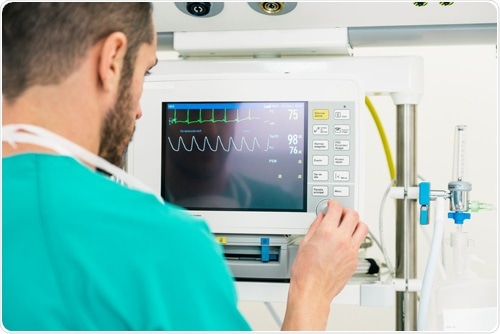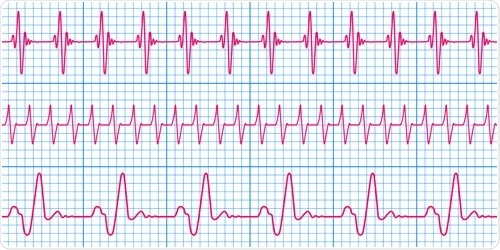‘IEC 60601-2-25 ED. 2.0 B:2011 - Medical electrical equipment - Part 2-25: Particular Requirements for the Basic Safety and Essential Performance of Electrocardiographs’ outlines a standard protocol for ensuring the optimum performance of an electrocardiogram (ECG or EKG) employed in the assessment of the electrical and muscular functions of the heart and addresses the safety concerns associated with its use.

Background of ECG
It is a long-standing fact that the key part of the human body is heart, even if ancient people had a dubious knowledge on this topic. For instance, Aristotle revealed that the heart is a three-chambered organ located in the center of the human body that functioned as the seat of intelligence, while the function of the surrounding organs is to cool this vital organ.
Today, more facts about the complexities of the heart are known. Thanks to Willem Einthoven who invented the first practical ECG in the early 1900s (he earned the Nobel Prize in Medicine or Physiology for this breakthrough discovery in 1924), medical professionals can perform accurate measurements to understand the activity in this four-chambered organ, using a non-invasive method wherein electrodes are placed on the patient’s skin. The ability of ECGs to analyze the heart makes them a standard practice to avoid any threats to patients and collect accurate data.
The IEC 60601-2-25 ED. 2.0 B:2011 standard
IEC 60601-2-25 ED. 2.0 B:2011 mandates the preparation of the ECG instrument through appropriate evaluation of the machine and its accessories in service activities. To perform these tests, appropriate humidity should be maintained as outlined in the standard. These tests are designed to calibrate the accuracy of the ECG machine.

The standard discusses in detail the tests applied to check the ECG voltage using a circuit board. It also provides guidelines to ensure the reliable performance of the ECG machine, such as the recommended electrode position when they are in use, and covers the general performance of the ECG.
The standard also addresses the ways for preventing the risk of electric transients and bursts and electrostatic discharge that could cause damage to the ECG machine or compromise its results.
IEC 60601-2-25 ED. 2.0 B:2011 also addresses the protection against electric shock that could cause harm to the patient or the person operating the ECG equipment. Additionally, the standard also provides the means to protect against the mechanical hazards that can arise from its use.
The content of the IEC 60601-2-25 ED. 2.0 B:2011 standard is also applicable to the ECG machine designed for use away from a hospital environment, such as in air transport or ambulances involving uncontrolled environmental conditions.
It is important to note that this standard is intended predominantly to address ECG performance that will eventually help provide a reliable diagnosis rather than the analysis and elucidation of the ECG results to determine that diagnosis. Although information on the rules and definitions for ECG measurements is covered in this standard, further knowledge and information is likely needed.
The IEC 60601-2-25 ED. 2.0 B:2011 standard amends and supplements IEC 60601-1 ED. 3.1 EN:2012 - Medical electrical equipment - Part 1: General requirements for basic safety and essential performance, which is a general document covering broader guidelines for the performance and safety of medical electrical equipment.
IEC 60601-2-25 ED. 2.0 B:2011 - Medical electrical equipment - Part 2-25: Particular requirements for the basic safety and essential performance of electrocardiographs can be found on the ANSI Webstore.
Acknowledgements
Produced from materials originally authored by Brad Kelechava.
About American National Standards Institute - ANSI
 As the voice of the U.S. standards and conformity assessment system, the American National Standards Institute (ANSI) empowers its members and constituents to strengthen the U.S. marketplace position in the global economy while helping to assure the safety and health of consumers and the protection of the environment.
As the voice of the U.S. standards and conformity assessment system, the American National Standards Institute (ANSI) empowers its members and constituents to strengthen the U.S. marketplace position in the global economy while helping to assure the safety and health of consumers and the protection of the environment.
The Institute oversees the creation, promulgation and use of thousands of norms and guidelines that directly impact businesses in nearly every sector: from acoustical devices to construction equipment, from dairy and livestock production to energy distribution, and many more. ANSI is also actively engaged in accreditation - assessing the competence of organizations determining conformance to standards.
Mission
To enhance both the global competitiveness of U.S. business and the U.S. quality of life by promoting and facilitating voluntary consensus standards and conformity assessment systems, and safeguarding their integrity.
Sponsored Content Policy: News-Medical.net publishes articles and related content that may be derived from sources where we have existing commercial relationships, provided such content adds value to the core editorial ethos of News-Medical.Net which is to educate and inform site visitors interested in medical research, science, medical devices and treatments.